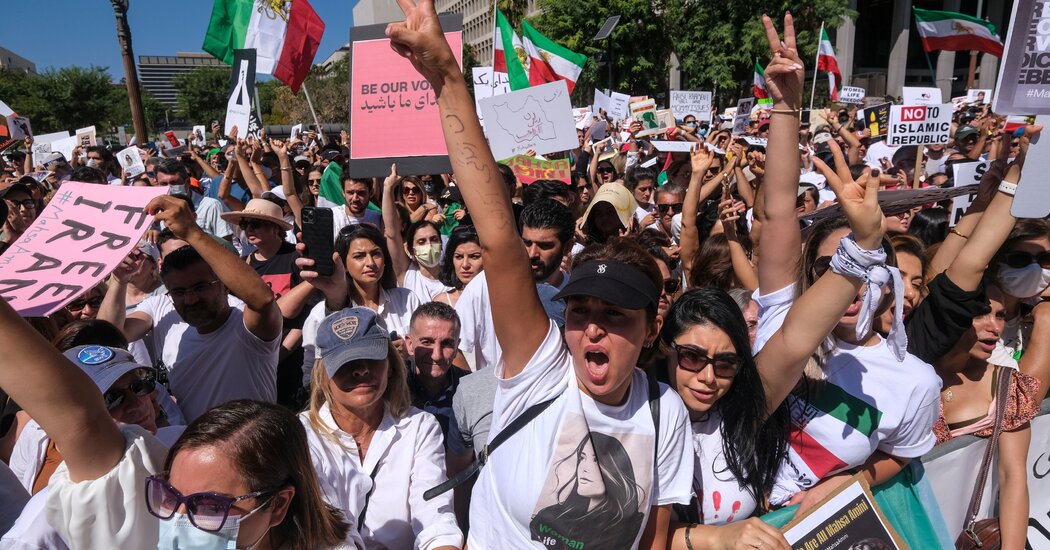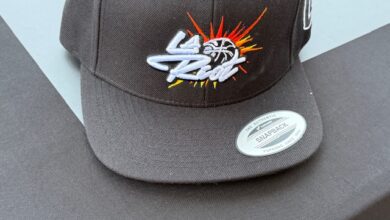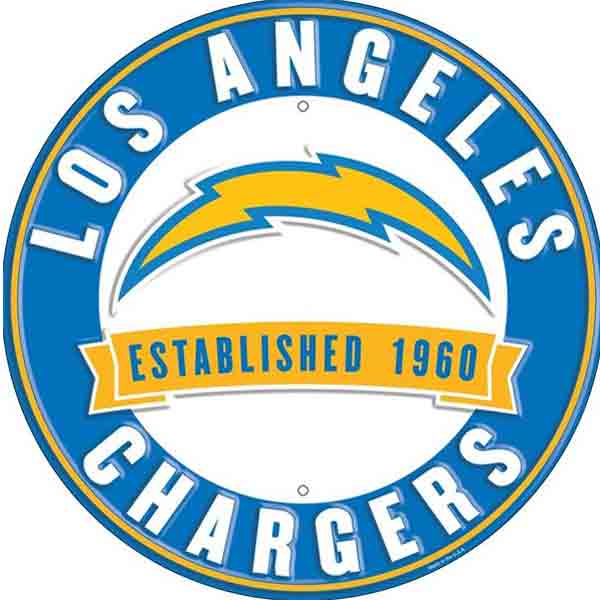Why So Many Iranian Immigrants Live in California

LOS ANGELES — Next to a small bookstore, where prayer beads and the tricolor Iranian flag hung in the window, a poster announced a nearby candlelight vigil for Mahsa Amini, a 22-year-old woman who died last month in Tehran after being detained by the country’s morality police.
On the opposite side of Westwood Boulevard, a shopkeeper taped a sign to his door stating “Women, Life, Freedom,” in both English and Farsi. Farther down the street, past Iranian grocers, barbers and clothiers, a protest flier tacked to an ice cream store said in bold, “The time has come.”
Now in their third week, demonstrations set off by Amini’s death have spread across the world and throughout the Iranian diaspora, including within California. Thousands gathered over the weekend for rallies in Los Angeles, San Francisco, San Diego and several other cities to show solidarity with the women of Iran.
The unrest that has gripped Iran is particularly resonant in the Los Angeles region, which is home to the world’s largest Iranian community outside of Iran. Just south of the U.C.L.A. campus, this stretch of Westwood Boulevard between Wilshire and Pico has been known as Tehrangeles since at least the 1980s.
Sepi Shyne, who fled Iran with her family when she was 5, said that moving to the Los Angeles area “felt very much like I was coming home in many ways, in terms of being Iranian American.”
“I haven’t been back to Iran, and I can’t go back,” Shyne, now mayor pro tempore for West Hollywood, told me. Los Angeles, she said, “is the closest thing to really being home.”
It’s not entirely clear why Southern California became such a hub for Iranians. There are about 400,000 Iranian-born immigrants in the United States, and more than a third of them live in the Los Angeles metropolitan region, according to data from the Migration Policy Institute. If you look at Iranian immigrants globally, roughly one in 10 live in Southern California.
“The size of the community in L.A. is kind of unparalleled, where you could theoretically live in L.A. speaking only Persian and get all of your daily needs done,” said Amy Malek, an assistant professor at Oklahoma State University who studies the Iranian diaspora. “It’s just not really true elsewhere.”
Sometimes people speculate that Los Angeles was attractive to Iranians because its climate, landscapes or even Tehran-like traffic felt familiar, but there’s not much evidence to back that up, said Kevan Harris, an associate professor of sociology at U.C.L.A.
In the late 1940s, Iranian students began coming to the U.S. to seek higher education, particularly engineering degrees. By around 1977, as Iran’s oil economy was booming, Iranians accounted for approximately one in 10 international students in the United States, more than from any other country, said Jeanne Batalova, a senior policy analyst with the Migration Policy Institute.
At that time, a small Iranian community had formed in Los Angeles, made up of students as well as people who had been religious minorities in Iran, including Jews, Armenian Christians and Baha’is. Southern California had long been a haven for religious minorities, and U.C.L.A. research suggests that a large share of Iranians who came to Los Angeles County in the early to mid-1970s were religious minorities, Harris told me.
Then, in 1979, the Iranian revolution erupted. Many Iranian students who were in the U.S. stayed here, and some of their families followed them as a wave of people escaped the country. Immigrants were drawn to places where other Iranians were already living, including Los Angeles.
A 1986 Los Angeles Times review of a Persian restaurant provides surprising insight into these immigration trends: “Iranian food is almost always prepared by the women, and the process is often arduous. That is why, despite the longtime presence of Iranian students in America, it wasn’t until the more recent arrival of their mothers that we had authentic Persian restaurants in Los Angeles.”
The result was that Los Angeles became a magnet for Iranians, even through later immigration surges in the 1990s and 2000s.
Malek, who grew up in Atlanta, recalled that when she first arrived at U.C.L.A. to do her Ph.D. she heard a woman on campus speaking Persian. The language was so rare everywhere else Malek had lived in the U.S. that she was used to introducing herself to whomever was speaking it.
She turned around to look at the woman talking. “She looked me up and down, and was like, ‘Mind your own business,’” Malek said, laughing. “It was just so normal for them. That’s really pretty unique to L.A.”
For more:
Where we’re traveling
Today’s tip comes from Gary Petersen, who recommends the Mendocino Botanical Gardens:
“Just returned from a trip to the North Coast. One of my highlights is always visiting the Mendocino Botanical Gardens.
This 47-acre site is generally split into two sections. The first section is carefully managed with a wide range of beautiful flowering plants. The rhododendron garden is world famous for its variety and color, while the dahlias and begonias are a riot of color and shape. The second section is maintained in its wild natural setting ending at coastal bluffs with spectacular views.
Highly recommended.”
Tell us about your favorite places to visit in California. Email your suggestions to CAtoday@nytimes.com. We’ll be sharing more in upcoming editions of the newsletter.
Tell us
The California general election is scheduled for Nov. 8. What do you want to know about the contests or the voting process?
Email us at CAtoday@nytimes.com with your questions.




